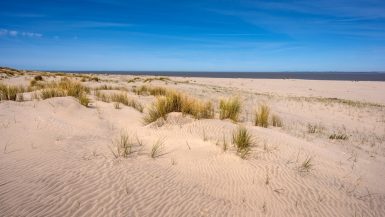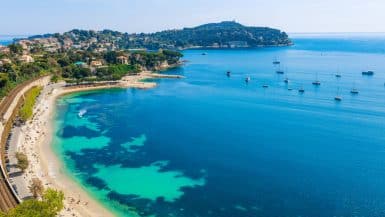From Brittany to Provence-Alpes-Côte d’Azur, France is a country full of tourist facets that invite you to visit. These include the beautiful coastal areas of the Atlantic and the Mediterranean, but also the Alps and major cities such as Paris. But what arguments do the 13 regions of the mainland plus Corsica each provide for a visit?
Brittany – Highlights of the Northwestern Peninsula
Brittany is not only the largest peninsula in France, the region also looks back on a rich history: from the Celtic Bretons to the rule of the Merovingians and Carolingians to the present day as a tourist hotspot of the French west. The striking peninsula is known for its very own cultural nuances, with Breton cuisine including seafood specialties and a Celtic influence visible in many places. The coastal nature is impressive – from Cap Fréhel with its lighthouse to the Côte de Granit Rose with its pink granite. Beautiful bays with a fantastic hiking panorama await you on site. Historic cities such as Quimper provide a fascinating glimpse into the nuances of regional architecture, while the city of Brest, with its Océanopolis, is home to an excursion highlight for travelling families.
Normandy – From Mont-Saint-Michel to the historic cities of Rouen, Caen and Le Havre
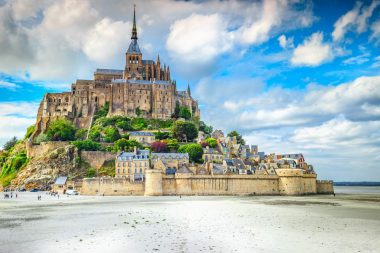
Mont-Saint-Michel – the UNESCO World Heritage Site appears at the top of the lists of the most famous destinations in France. The magnificent abbey on the coast marks a tourist highlight of Normandy. The scenic coastal region is geographically shaped by the Seine and the northern coast on the English Channel. Long a landscape influenced by France but also by the kings of England, cities worth visiting such as Le Havre, Rouen and Caen await you here. Geographically, culturally and touristically, beautiful Normandy has numerous attractions. For travellers, sights such as the old towns of Rouen and Caen, the partly untouched nature of Norman Switzerland and the coastal scenery of Étretat and the Alabaster Coast are worthwhile. In its tourist attractiveness in the northwest of France, Normandy is similar to Brittany.
Hauts-de-France – Holiday recreation in the border region with Belgium
In the eastern vicinity of the Normandy region, Hauts-de-France rests on the border region with Belgium. Hauts-de-France is still a relatively young region: in 2016, it was merged from the former lands of Nord-Pas-de-Calais and Picardy, and today has a population of around six million. Cities such as Lille (approx. 235,000 inhabitants) and Amiens (approx. 135,000 inhabitants) are among the most populous settlements in Hauts-de-France. While the proximity to Belgium favors beautiful trips to the neighboring country, cities such as Lille with numerous museums including the Palais de Beaux Arts and Amiens with historic buildings such as the cathedral and the Belfry, which is a UNESCO World Heritage Site, inspire curious travelers in northern France. The region is also home to Parc Astérix, which attracts millions of visitors every year and is one of the four largest amusement parks in France.
Grand Est – Tourist highlights near Strasbourg and co.
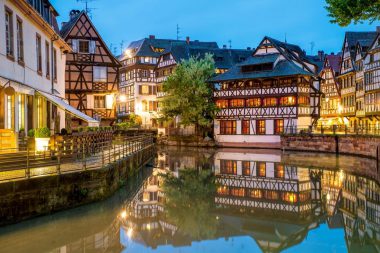
Grand Est, the great east, aptly describes the region that borders Belgium, Luxembourg and Germany. The historic territories of Alsace, Lorraine and Champagne-Ardenne are largely enclosed by today’s Grand Est. Among the famous settlements of the region is the beautiful Strasbourg, known for the Strasbourg Cathedral and the historic district of Petite France. From the old centre of Reims with its cathedral to the famous Haut-Koenigsbourg Castle, Grand Est has numerous facets of northern France worth seeing. Metz, Nancy and co. – Grand Est provides countless reasons for a tourist stop.
Île-de-France – Holidays in the metropolitan area of Paris
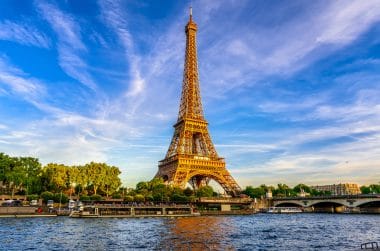
Although Île-de-France is one of the smallest regions in France in terms of area, it is home to over 12 million inhabitants. This is mainly due to one city: Paris. Île-de-France encompasses the French capital, making it one of the most important regions of mainland France. Whether it’s the world-famous Louvre or the Eiffel Tower, there are plenty of reasons to visit Paris . A highlight on family outings is certainly the local Disneyland. The area of Île-de-France is similar to the conurbation of Paris, and of course you can also visit the famous Palace of Versailles. It is therefore not surprising that Île-de-France is one of the most popular travel regions in France.
Pays de la Loire – Historical sights on the Loire
As the name of the region suggests, the famous Loire River flows through central parts of Pays de la Loire. The region has existed in its current form since 1955 – and includes important cities such as Nantes, Angers and Le Mans. Thanks to the Loire, some of the historic Loire castles are also located here. In Angers, for example, the Chateau d’Angers from the 11th century is located, and the old core of the city is also a UNESCO World Heritage Site. The Château des ducs de Bretagne, the castle of the Dukes of Brittany, is enthroned in Nantes – and is a reminder of a time when the rulers of Brittany also exerted their influence in the Pays de da Loire. If you are interested in the beautiful river landscapes of the Loire including castles, Pays de la Loire with its historic old towns is the right place for you.
Centre-Val de Loire – Journey to the beautiful castles of the Loire Valley
The central Loire Valley – that’s how Centre-Val de Loire can be roughly translated. And the name already underlines how significantly the region is shaped by the Loire. The river flows right through the heart of the Centre-Val de Loire – along cities such as Orléans, Blois and Tours – and its banks are also home to the dreamlike castles of central France. Whether it’s the Château de Chambord, the Château de Chenonceau or the Château de Villandry, the magnificent buildings of the Loire Valley immediately attract the attention of tourists to France. Municipalities and towns such as Amboise, Chervny and Chartres, characterised by historic walls and castles, also contribute to the charm of the region.
Bourgogne-Franche-Comté – Highlights near Dijon and Burgundy

Like Hauts-de-France, Bourgogne-Franche-Comté is still a relatively new region, created in 2016 by the merger of Bourgogne and Franche-Comté. Although Bourgogne-Franche-Comté dominates a comparatively large part of the French northeast, only about 2.8 million inhabitants live here. But that doesn’t change the fact that Dijon, one of the most beautiful cities in eastern France, forms the regional capital. This is where the influential Musée des Beaux-Arts of Dijon is located, and the Gothic cathedral of Dijon stands out strikingly next to the numerous magnificent buildings of the historic centre. Whether it’s the UNESCO World Heritage Site Fontenay Abbey, the old town of Auxerre or the historic wine region of Burgundy – Bourgogne-Franche-Comté has numerous highlights to show despite its small population.
Nouvelle-Aquitaine – Relaxing holidays on the Atlantic coast
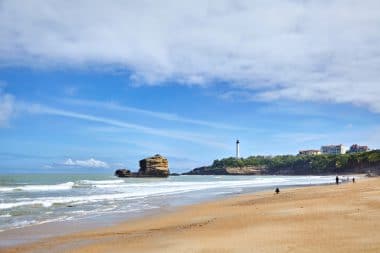
In Nouvelle-Aquitaine, the largest region of contemporary France, nature is one of the protagonists thanks to the breathtaking Atlantic coast. The Dune du Pilat, the highest shifting dune in Europe at 110 metres, is a particular reminder of this. The coastal region of Arcachon , including the dune, is one of the tourist highlights of Nouvelle-Aquitaine. However, the city of Bordeaux, with its old buildings and museums, also illustrates the rich culture of the French southwest. From the Place de la Bourse to the Pont de Pierre to the Musée des Beaux-Arts de Bordeaux – the city provides enough sights for a stay of several days. And so the holiday region of Nouvelle-Aquitaine thrives on its rich contrast of culture and nature, making it a top travel destination in France.
Auvergne-Rhône-Alpes – Alpine recreation in the east of France

In the eastern vicinity of Nouvelle-Aquitaine lies the natural region of Auvergne-Rhône-Alpes. Lyon, the third largest city in France, shapes the cultural heart of Auvergne-Rhône-Alpes. In addition to world-famous cuisine from quiche to Lyon, the city is home to magnificent architecture – also seen at the Saint-Jean Cathedral. The brothers Auguste and Louis Lumière once shot the first film on the street of the first film. The name of the region also illustrates the prominence of the Alps in the east of the country. From Lac d’Annecy to the alpine winter sports regions of Alpe d’Huez and Tignes, Auvergne-Rhône-Alpes is also synonymous with French Alpine recreation.
Occitanie – coastal region in the south of France

Large parts of the French south are shaped by the Occitanie region, which shares the Mediterranean coastal region of mainland France together with the neighbouring region of Provence-Alpes-Côte d’Azur. Toulouse (just under 500,000 inhabitants) is by far the most prominent cities, followed by Montpellier (approx. 300,000 inhabitants) and Nîmes (approx. 150,000 inhabitants). Attention is drawn to historic ancient buildings such as the Pont du Gard aqueduct and the Nîmes amphitheatre, which are among the best preserved buildings of their kind in France. For passionate beach vacationers, the south of the region is particularly interesting.
Provence-Alpes-Côte d’Azur – From culinary delights to beach holidays
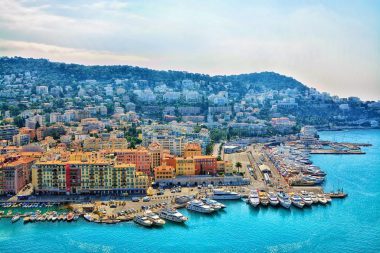
Provence and the Côte d’Azur are two of the most beautiful cultural and natural regions within Provence-Alpes-Côte d’Azur. Nice, Cannes, the neighbourhood to Monaco and the Italian Riviera of Flowers make the hearts of beach holidaymakers beat faster. Marseille in the southwest of the region is considered the largest city. Culinary highlights also await you in Provence: from exquisite wines to specialties such as ratatouille, bouillabaisse and aoili. The beaches of Provence-Alpes-Côte d’Azur are famous – whether the city beaches of Nice and Cannes or the bay at Plage Pampelonne or the magnificent rocky panorama at La Calanque d’En-Vau. The Provence-Alpes-Côte d’Azur region provides many ingredients for an unforgettable holiday.
Corsica – Mediterranean island holiday on France’s picturesque island
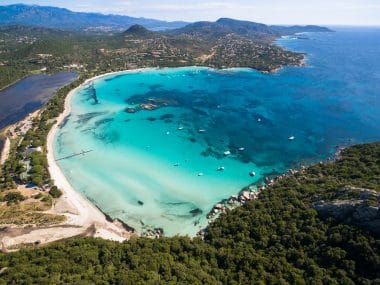
Off the shores of southern France – far in the Mediterranean – rests beautiful Corsica. The picturesque island nature and port cities such as Ajaccio make Corsica a recommendable contrast to a holiday on the French mainland. The island, steeped in history, which was already inhabited in ancient times, is still partly characterized by Genoese architecture today. The once strategically important Genoese towers continue to shape the prominent coastal region of Corsica. Partly remote beaches and stretches of coast – from Palombaggia to Saleccia – help to switch off in a relaxed way. Corsica thus presents itself as a wonderful alternative to holidays on the mainland.


